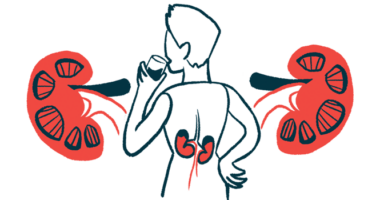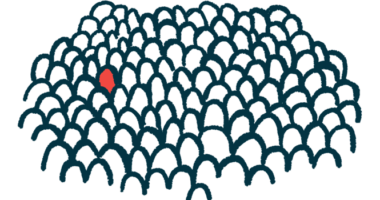aHUS and C3 glomerulopathy seen in Japanese man with CFI mutation
Soliris, which suppresses immune complement system, resolved symptoms

A mutation in the complement factor I (CFI) gene can lead in rare cases to both atypical hemolytic uremic syndrome (aHUS) and C3 glomerulopathy, two complement-mediated kidney diseases, a case study in Japan shows.
“Overlapping [aHUS] and C3 glomerulopathy with complement factor I mutation is very rare, especially in Japan,” the researchers wrote in “Overlapping Atypical Hemolytic Uremic Syndrome and C3 Glomerulopathy with Mutation in CFI in a Japanese Patient: A Case Report,” which was published in Internal Medicine.
Soliris (eculizumab), an approved aHUS therapy that suppresses the immune complement system, resolved the man’s symptoms, affirming previous reports that show it is effective for treating the rare combination of aHUS and C3 glomerulopathy.
aHUS is a rare disease where blood clots form in small blood vessels, particularly the kidneys, which can result in the destruction of red blood cells (hemolytic anemia), low platelet counts (thrombocytopenia), and kidney failure.
It is caused by the abnormal activity of the complement cascade, a part of the immune system that triggers inflammation and blood clotting. Mutations in genes that encode for components of the complement cascade are often associated with aHUS, but an something like an infection is usually needed to trigger the disease.
C3 glomerulopathy is a rare condition marked by the deposition of the C3 component of the complement system in the glomeruli, the network of small blood vessels that form kidney’s basic filtering units.
Overlapping aHUS, C3 glomerulopathy are rare
Several disease-causing mutations in complement genes, such as “CFH, CFI, CFB, and C3 have been reported as congenital causes of aHUS and C3 glomerulopathy,” wrote the researchers, who noted “both diseases share the same genetic variations.”
Cases of overlapping aHUS and C3 glomerulopathy are rare, however, even more so with reported mutations in the complement cascade. A team of researchers in Japan described the case of a 34-year-old man with both conditions due to a mutation in the CFI gene.
The man went to the hospital after having blurred vision in both eyes, headaches, and nausea. His body temperature and heartbeat were normal, but he had high blood pressure, or hypertension, as did his closest relatives.
A physical exam showed no signs of neurological damage, skin rashes, or swollen lymph nodes, which can occur due to infections, autoimmune diseases, and cancer. An eye test revealed several tissue abnormalities consistent with severe hypertensive retinopathy, or damage to the blood vessels in the back of the eye due to hypertension.
Laboratory blood tests revealed hemolytic anemia, determined by low levels of hemoglobin — the protein that carries oxygen in red blood cells through the body — and haptoglobin, which indicate red blood cell destruction.
The man also had thrombocytopenia and kidney dysfunction, as revealed by high creatinine blood levels and low estimated glomerular filtration rate. A urine analysis revealed the presence of proteins and small amounts of blood in the urine, consistent with kidney damage.
The clinical findings first suggested thrombotic microangiopathy (TMA), a group of rare conditions to which aHUS belongs, caused by hypertension, and the man was admitted to a hospital to start antihypertensive treatment.
While his headache and nausea diminished, and the protein levels in his urine decreased, he continued to show low platelet counts and poor kidney function.
A kidney biopsy revealed tissue features of aHUS as well as C3 deposition, confirming both aHUS and C3 glomerulopathy.
The man underwent three sessions of plasma exchange, a blood-cleaning procedure, followed by treatment with Soliris, given directly into the bloodstream once every two weeks.
This led to platelet counts increasing and stabilizing, and a gradual improvement of kidney function. His hypertension was also controlled with appropriate antihypertensive medication.
The man was discharged 40 days after being admitted and was switched to Ultomiris (ravulizumab-cwvz) once every eight weeks. Ultomiris is similar to Soliris, but requires less frequent dosing.
CFI gene mutation revealed
Genetic testing on aHUS-related complement pathway genes revealed a mutation in one copy of the CFI gene that was considered likely disease-causing. Called p.Asp283Gly, it results in a change in a single amino acid, protein’s building blocks, at a region that’s critical for the resulting CFI protein’s function.
This report, along with one of a patient with TMA and C3 glomerulopathy associated with this and another mutation, suggest that people carrying the p.Asp283Gly mutation “may be genetically susceptible to C3 glomerulopathy and TMA,” the team wrote.
While the mutation is classified as likely disease-causing, it seems to be more frequent among Japanese people, indicating its ability to cause symptoms is poor, as there are so few cases reported.
Other differences in the frequencies of aHUS-causing mutations in complement genes have been described between patients in Japan and those in other countries. C3 mutations have been reported to be the most common, without any CFI mutation being detected. In Italy, France, and the U.S., C3 mutations are rare and CFI mutations were reported in under 10% of patients.
“Therefore, our case of a Japanese patient with a CFI in aHUS is considered rare,” the researchers wrote. “Data on Japanese patients remain insufficient; therefore, further case series and findings from both experimental and clinical studies of complement mediated kidney disease are needed to elucidate the [underlying mechanisms].”







